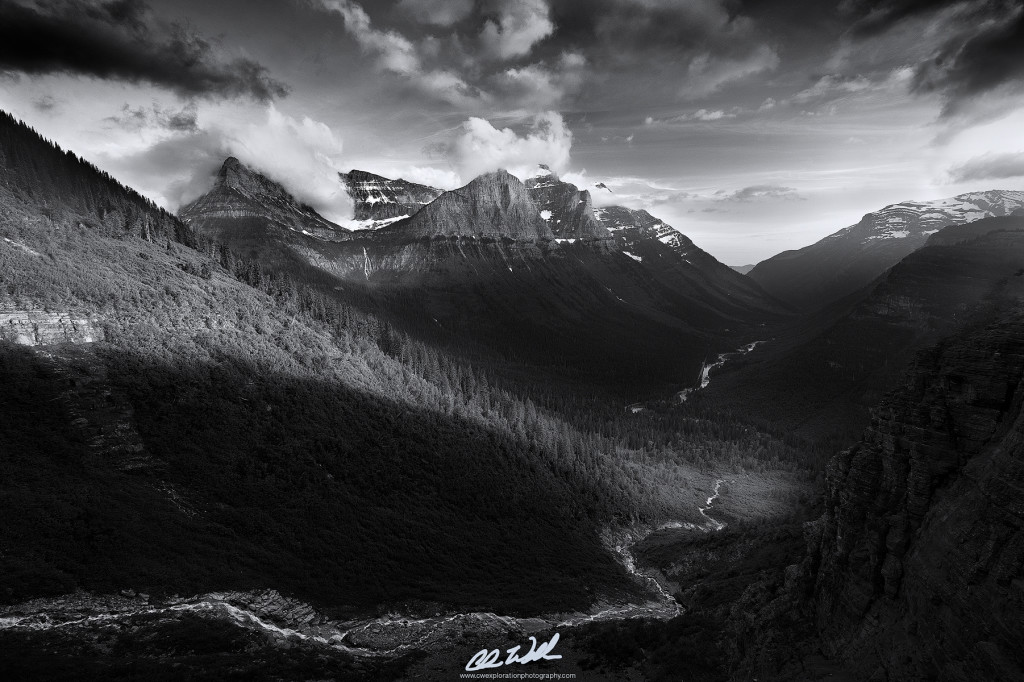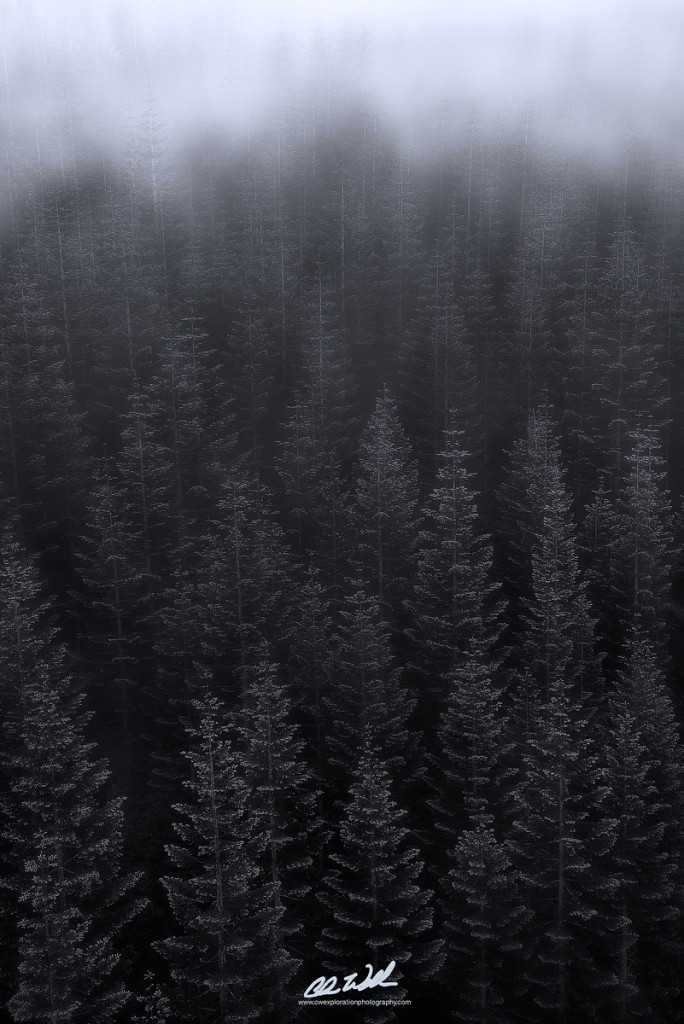Shifting Your Mindset: Black and White Landscape Photography

Here’s a moody black and white image of a gorgeous sunset at Ruby Beach, WA
Prior to starting this project I had worked with various monochrome techniques (producing photos with one hue of color such as blue) but I had never really, truly worked within the constraints of a true black and white framework. I’ve always loved traditional black and white landscape photography but for personal reasons I always felt that I couldn’t fully convey the mood, the light and the overall atmosphere that I try to capture in my work. It turns out that I was completely wrong. I think that working within the constraints of a black and white medium really forces you to pay attention to the light, the contrast and the tonality in your RAW images. A lot of folks tend to think that black and white photography is too old school or that you can’t apply today’s techniques to that art form or that it’s just bland. That stigma can largely be attributed to the way we view photography in social media today. Everyone has become such a mass consumer of images, videos and other media that anything that lacks color or is subtle in nature tends to get overlooked. I know that folks in the landscape photography community tend to pay attention to those subtle things, but as a whole I think that most folks love seeing the photos that pop and scream “Look at me!!”.
Black and white photography is not easy and it’s not for the faint of heart. I actually think that working within the medium itself forces you to take big risks since it will only appeal to a select number of individuals outside of the landscape and fine art community. I think the biggest reason for this is that the market has been saturated by folks that simply click a filter setting in their camera or do a quick change to black and white using Silver Efex or the built in Photoshop or Lightroom plugins that they may not have seen a true fine art black and white image. I’m not knocking the use of these tools; in fact I think that they are a great starting place, but you definitely have to move beyond those plugins and understand that black and white images can offer just as much complexity in shadows, light, contrast and tone as their counterparts do in color. Shifting your mindset and artistic vision is critically important to understanding the complex subtleties that black and white images implore and in doing so I hope that your eyes will be opened to the possibilities within the medium.
An Experiment in Light
When I first started working within the medium of black and white landscape photography one of the initial challenges that I came across was how to portray light, mood and atmosphere that I look to achieve in color images in a black and white framework. I took many of the same techniques that I employ in my normal photos over to a monochrome framework and some worked and well some didn’t. I think the toughest thing to accomplish is giving your monochrome images the same depth and dynamic range that you see in color images. In order to do this I utilized luminosity masks, various high contrast layers, dodging and burning and my own version of a black and white conversion.
My process is a bit drawn out but my first steps always involve editing an image in color first to really get a feel for the light play, the shadow complexities and the overall mood and atmosphere of the image. I then try to gain the same results within the black and white medium. I think that first editing the photo as you would in color really allows you to breath more life into your monochrome or traditional black and white images. Ansel Adams, Sebastian Salgado and even the painter Albert Bierstadt all utilized techniques to emphasize light and to show contrast and light play between the sources of light and darkness in the medium they were working in. Putting emphasis on light and dark while maintaining a level of detail is really one of the best ways to give your monochrome photos a more dynamic and three dimensional feel.
What Photos Work Well in Monochrome?
This is honestly a pretty loaded question. I think that all photos can work well in monochrome, to a certain extent, dependent upon how you process them and what your final artistic vision is for the photo. I think the ones that work the best though are photos that are dynamic in light, shadows and contrast. Photos that achieve a great deal of depth through layering and photos that may not have that dynamic color range that you’re looking for. Typically we are used to seeing extremely long exposure seascapes or just images that involve water in general portrayed in black and white because the soft tones and exposure settings really lend themselves to portrayal in monochrome. That stigma has definitely begun to shift as folks like Luke Austin, Marc Adamus and Alister Benn present their fine art images within a black and white framework and I think that we may start seeing a resurgence in the treatment itself. Many of their images depict that photos of all types can work well within the medium and that portrayal of light, mood, atmosphere and detail can be just as effective in a world without color.
I think the bottom line is don’t be afraid to think outside of the box and to try new techniques. Personally, I find that working outside of my comfort zone forces me to become a more well rounded artist and it also forces me to change my perception on a number of things in the landscape photography field and community.
If all else fails if you’re not happy with how a photo is turning out in color, try editing it in monochrome; you might be pleasantly surprised by the outcome.


